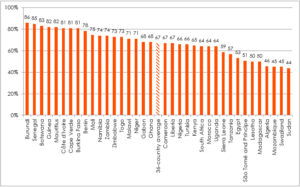
Ahead of the G20 Anti-corruption Working Group meeting on April 10-12, Elizabeth David-Barrett from the University of Sussex looks at how the G20 might learn from the early lessons and experiences of business-led anti-corruption clubs, and how they can disincentivize corruption, and incentivize cultures of integrity.
The G20 Anti-Corruption Working Group’s Action Plan for 2017-18 emphasises the need for the fight against corruption to engage the private sector. That makes sense. Corruption is usually a two-player transaction, so it makes sense that corruption can only be fought if both sides change their behaviour.
Yet persuading companies to take part in anti-corruption initiatives sounds like a tough sell. Even getting them to comply with anti-bribery laws has been a slow process. When the US introduced the Foreign Corrupt Practices Act in 1977, American companies, prohibited from paying bribes to foreign public officials, complained bitterly that they were unable to compete with foreign companies that faced no such constraint.
The US authorities seemed sympathetic, initially taking a light-touch approach to enforcing the law. That changed once the OECD Convention was introduced 20 years later, but even then, OECD members made similar gripes that emerging market competitors from China and India were not covered and could thus use graft to compete unfairly.
Yet there are indications that the G20’s goals are not so pie-in-the-sky. A recent flurry of corporate activity to start and join anti-corruption clubs signals a major shift in norms about bribery in business. Collective action initiatives, in which companies make voluntary commitments above and beyond the legal requirements for anti-bribery compliance, have proliferated in recent years. Everybody seems to want to be part of an anti-corruption club.
Some of these clubs cover multiple industries, like the World Economic Forum’s Partnering Against Corruption Initiative (PACI); others focus on particular sectors, but may have broader ethical concerns, like the Defence Industry Initiative on Business Ethics and Conduct. Some are international, others collect members just from a particular country. And their activities also vary, from pledging zero tolerance of bribery to signing up to codes, standards or certification schemes.
How are we to understand this behaviour? Are companies really motivated to clamp down on graft, to forego the potential advantages of informal agreements, and even take the risk that they will lose business to less scrupulous competitors? The logic of collective action would suggest that such behaviour is irrational – not least because, if the club achieves its aim of reducing corruption, everyone will benefit; as such, companies face incentives to free ride.
This leads some to suspect that the clubs are just cheap talk. Given that bribery often goes undetected and unpunished, perhaps companies are simply faking anti-bribery sentiment whilst surreptitiously cheating on the club rules?
I suggest an alternative, less cynical, explanation. The clubs are responding to – and facilitating – a rapid change in norms about bribery in international business. Further, my research suggests that anti-corruption clubs are likely to attract members as long as their design and governance structures meet certain conditions: first, there should be costs to membership; second, members should receive selective benefits; and third, compliance with the rules must be monitored and enforced.
Joining or entry costs are an important filter that are likely to deter some of the potential cheats. They need not manifest as actual fees, but rather tend to involve making commitments and pledges to stick to certain behavioural rules, e.g., to refuse bribes for demands, or to require high anti-bribery standards throughout the supply chain. Setting a fairly high bar deters companies that are not serious.
Selective benefits are important because they accrue only to club members. These can be social benefits, such as reputational gains. However, a surprisingly high proportion of the members of anti-corruption clubs do not advertise their membership. This suggests that they still regard the issue as sensitive, and not necessarily one that will enhance their reputation with stakeholder groups.
For some companies, reputational benefits translate into concrete material gains. This might particularly be the case for small and medium-sized companies on emerging markets, which find that a credible signal of anti-corruption commitment can help them to get access to contracts with large companies that care about maintaining standards and seek assurance that their suppliers stick to the same norms. Anti-corruption clubs provide a badge of credibility.
However, that credibility relies on there being effective monitoring of adherence to club rules, and the imposition of sanctions – or suspension from the club – where standards falter. Club members have an interest in regulating themselves and observing the behaviour of one another, so this function can emerge fairly naturally – but only if membership networks are sufficiently dense.
More research is needed, but initial findings suggest that the way that collective action initiatives are designed is key to their success and sustainability. There may be a need for different structures to address corruption in particularly high-risk sectors, and there is certainly potential for more systematic analysis of what works and why. But there is strong evidence that the private sector is indeed taking the lead in building cultures of integrity. Bribery is no longer ‘business as usual’.

Schreibe einen Kommentar